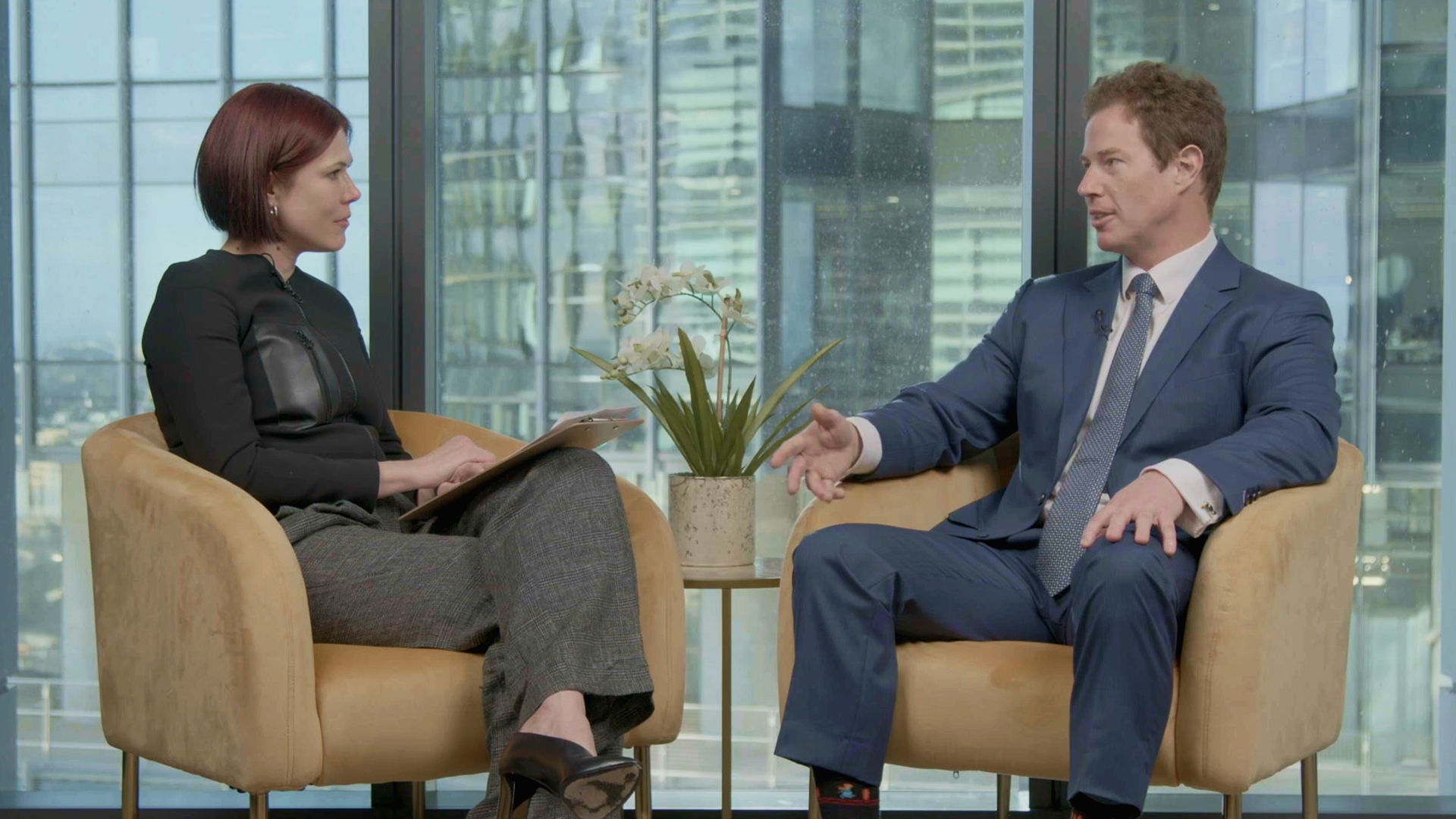Falling ASX yields explained: What retirees and income investors need to know
Over the past three years, the average yield on the Australian share market has dropped from around 5% to just 3.5%.
So is income on the ASX becoming a fantastical beast? And how do you find it?
According to Michael O'Neill, portfolio manager at IML, the ASX's falling yield isn't just a passing phase - it’s a structural issue. But with the right strategy, there are still opportunities to find steady, growing income.
For the full experience, watch the video below.
Please note this interview was filmed on 25 June, 2025
Why ASX yields are shrinking
Two sectors are primarily to blame.
“The first is financials, the second is materials. Together, they’re about half the market,” says O’Neill. “So you put it down to the concentration of the index more than anything.”
Bank stock prices have risen, but their dividends haven’t kept up. Meanwhile, materials, particularly iron ore miners, have been hit by declining demand from China.
“In the case of the financials, major bank stock prices are up and their earnings and dividends just haven’t kept pace with the momentum in their share prices,” he explains. “CBA is now 12% of the index.”
As for the miners, “the materials yield as a whole has fallen from 8.5% to about 3.5% in that period,” says O’Neill. “So given how big those sectors are, it really is hard to have seen growth in the index yield at all.”
Volatility isn’t the enemy
Despite the geopolitical and market turbulence of recent months, O’Neill isn’t concerned about it affecting dividend reliability.
While share prices have swung, particularly in April due to Trump’s tariffs and tensions in the Middle East, O’Neill believes this kind of volatility actually creates buying opportunities for income-focused investors to build a diversified portfolio of stocks with compounding earnings and growing yields.
"The volatility in dividends is much lower than the volatility in share prices,” he says.
Companies like Amcor (ASX: AMC) and The Lottery Corporation (ASX: TLC) are examples of stocks with earnings largely unaffected by geopolitical noise. “If you’ve got a diverse approach,” O’Neill says, “you should feel confident that the income generation of your portfolio should be pretty steady.”

Active income vs passive ETFs
Retirees relying on market income might assume a passive ETF offers a low-cost solution, particularly on a surface level. But O’Neill’s research tells a different story.
“We looked at a passive ASX 300 ETF and compared that to an investment in the Investors Mutual Equity Income Fund,” he explains.
While total returns over time were similar - around 8% annually - passive investors withdrawing income along the way were left with 40% less capital over the long run.
“If you don’t have the luxury of reinvesting distributions because you’re reliant on your income to live, the volatility and the drawdowns at inopportune times could steadily erode your balance,” he says.
“Really our objective is to keep retirees invested.” To do that, O’Neill argues, you need a strategy that prioritises both higher income and lower risk.
Fantastic yields and where to find them
O’Neill points to infrastructure and property as sectors that, if chosen carefully, offer dependable yield.
Two of his current top picks are Dalrymple Bay Infrastructure (ASX: DBI) and Charter Hall Retail REIT (ASX: CQR).
“These two stocks pay over 6% yield. The yield is growing and I challenge anyone to find me two stocks with that sort of profile of growing yield and that level of certainty attached to it,” says O’Neill.
The new normal?
Could we simply be at a dip in the market cycle and we will see improvement in the next few years? Or is this state of play here to stay?
O’Neill leans toward the latter: “It might not be a moment in the cycle because of those ongoing pressures to financials and materials, which make up half of our market.”
But all is not lost. In fact, there’s still plenty of upside for investors willing to look beyond the big banks and miners.
“There’s a lot of dispersion in valuation in the market at the moment,” he says. “There’s a lot of stocks with higher than market yields, and you could see a scenario where those other parts of the market start doing more of the heavy lifting.”
Part of IML’s strategy includes not just careful stock selection, but also selling options to generate additional income when volatility rises.
“We’re very bottom-up in our approach,” O’Neill adds. “We don’t take a top-down approach with sectors… but obviously the banks and resources are an area where you’ve got to be particularly careful.”
After reliable income and capital growth?
The Investors Mutual Equity Income Fund focuses on providing investors with a reliable, and relatively high, income stream, as well as capital growth, with lower volatility than the ASX 300. To learn more, visit their website or fund profile below.

3 topics
2 stocks mentioned
1 fund mentioned
1 contributor mentioned
.jpg)
.jpg)